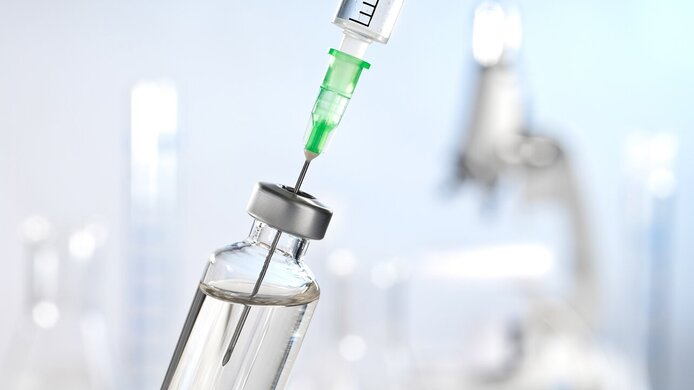When to immunise if blood stem cells are being transplanted?

The transplantation of blood stem cells or bone marrow is an intervention that has a profound impact on the human body. The bone marrow is home to the stem cells that produce blood cells, including the white blood cells of the immune system. During transplantation, the doctors first destroy the body’s own stem cells as completely as possible by radiation and chemotherapy before injecting new stem cells into the patient’s bloodstream. These new cells will repopulate the bone marrow, thus giving the patient a completely new immune system resembling that of the donor. Although the patients have a chance of complete recovery, a variety of complications may occur. “In the first months after receiving stem cell transplantation, the patients have a considerably increased risk of all kinds of viral, bacterial or fungal infections”, explains Christina Forstner from the Medical University of Vienna in the interview with scilog. “Moreover, transplantation leads to a loss of immunity acquired through vaccination. Hence, this group of patients requires complete re-immunisation.” When this re-immunisation exactly should be carried out has not yet been fully ascertained. In a basic clinical research project funded by the Austrian Science Fund FWF, a team led by Forstner is conducting a pilot study to explore this issue. For her study, Forstner has chosen to focus on vaccination against TBE, tick-borne encephalitis, which can result in serious damage to the central nervous system and even death.
Re-inoculating completely
Depending on the particular vaccine, there are different recommendations when to re-immunise patients after stem cell transplantation. “According to the recommendations, live vaccines can be used for re-immunisation no earlier than two years after transplantation and inactivated vaccines after six to twelve months”, relates Forstner. Inactivated vaccines consist of killed pathogens, while live vaccines contain pathogens that have been strongly attenuated but are still viable. The latter type presents no risk to healthy individuals but may become dangerous for immunosuppressed patients, which is why the waiting period after stem cell transplantation needs to be longer. As a general principle, inactivated vaccines such as the TBE vaccine can be administered earlier, but: “In the first three or four months after transplantation, patients are not even capable of developing immunity”, warns Forster. She notes that data is scant as to what is the right time for re-immunisation. Several researchers are currently investigating this issue, including Forstner’s team. “Particularly in the case of TBE vaccination, there is not a single study among stem cell transplant patients anywhere in the world.” Forstner’s ongoing study includes 17 patients who are given basic TBE immunisation 11 to 13 months after stem cell transplantation. This basic immunisation entails three vaccines, the second after one month and the third after nine to twelve months. The researchers record the reactions of the patients using several tests, including the determination of antibody concentration against TBE-virus. The results will be compared to those of a control group of the same number of healthy individuals, who will be given TBE vaccination for the first time.
Complications in case of transplant rejection
A special case is the group of patients with transplant rejection reactions, particularly the so-called “graft-versus-host-disease” (GVHD), where the new immune system attacks the body. “They make up a large proportion”, says Forstner. Depending on the severity of the rejection, the patients receive medication that weakens their immune system even further. Failure to control these reactions may even lead to multiple-organ failure or death. “If such reactions occur, we are even less certain whether these patients are at all capable of developing a sufficient immune response after revaccination”, adds the physician. The results of the investigations are currently being analysed, but some interesting observations are already available. It was shown that more than half of the patients had a surprisingly high number of neutralising antibodies against TBE even one year after stem cell transplantation. They came from the donor’s immune system with the graft. “We did not expect that”, says Forstner. “Thus, a high proportion of patients still has a certain level of protection against TBE one year after stem cell transplantation, and we could perhaps wait even longer before re-immunising that group.”
Personal details Christina Forstner is an Associate Professor at the Medical University of Vienna and a specialist in Internal Medicine at the University Hospital of Jena (Germany). Her research interests are infections in immunosuppressed patients, particularly with a view to vaccination, fungal infection strategies and management and the use of antibacterial and antimycotic substances in hospitals.
Publications





